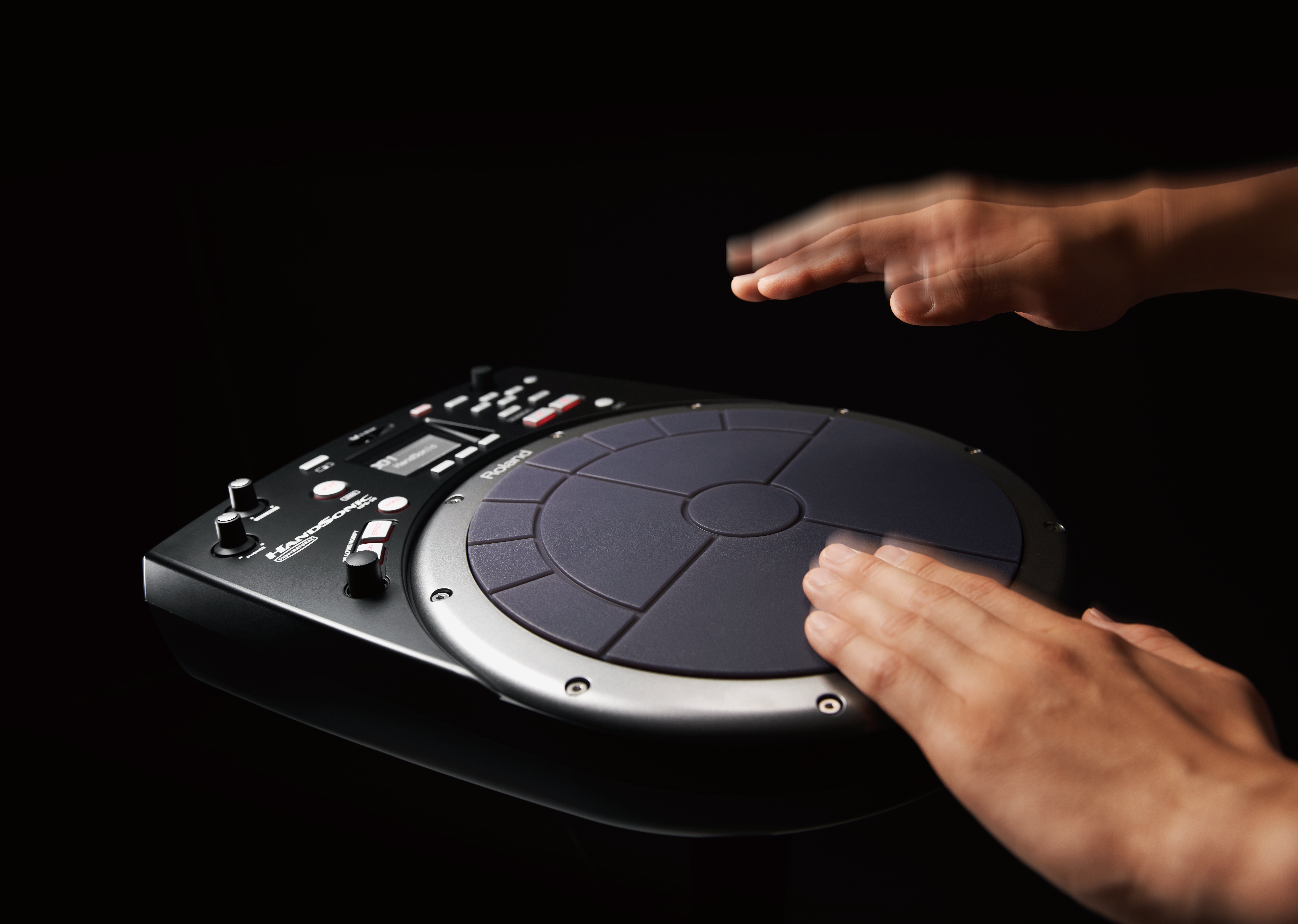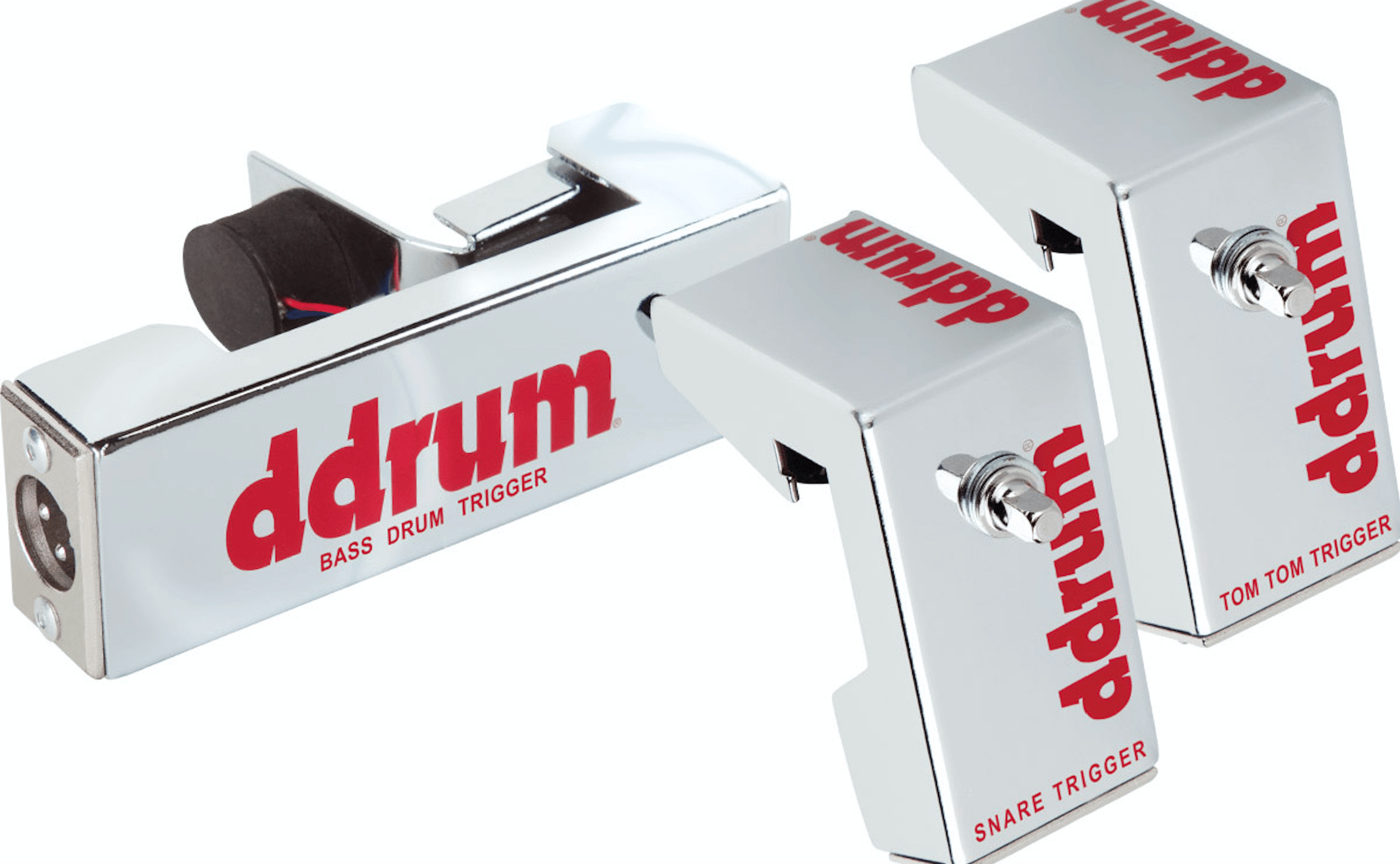
Have you ever wondered how your favorite drummers manage to sound like their studio recordings when they play live?
Have you ever tried playing along to your favorite songs and gotten discouraged when your drums don’t sound as good as the record?
Have you ever used experimental sounds or electronic samples in the studio but struggled to recreate them live?
If you answered yes to any of these questions, you’re not alone! As drummers, we’re often portrayed as uncreative, discouraged from pushing boundaries and making melodic contributions. Many of us feel that we have more to offer, but are limited by standard acoustic drum setups. If this sounds like you, your inner hybrid drummer is calling out to you!
Hybrid drumming incorporates electronic percussion products with an acoustic drum kit, forming one dynamic percussion instrument.
While the term ‘hybrid’ is commonly used in many industries to describe the merger of two or more complementary elements, ingredients or species, hybrid drumming remains an elusive phrase in the drumming community. But while the term may be uncommon, the practice is not.
If your drum set is comprised of any combination of acoustic and electronic drums (e-drums), drum samplers or electronic cymbals – congrats! You’re a hybrid drummer.
Many drummers may be surprised to learn that hybrid drumming has been used in mainstream music since the earliest introduction of electronic instruments.
While prog rock pioneers like King Crimson’s Bill Bruford and Rush’s Neil Peart were among the earliest hybrid drumming crusaders, the trend exploded in the late ’80s as pop legends like Sheila E. and Phil Collins explored the full potential of Octapads and Simmons e-drums.
Today, hybrid drumming is used across all genres. From legendary session artist Vinnie Colaiuta to genre-bending titans like Larnell Lewis and global pop sensation Josh Dun, drummers continue to explore the endless possibilities by pushing the boundaries of musical creativity. Though it may not yet be the industry standard, it’s safe to say that this “trend” is here to stay.
While budget and genre no doubt play a role in your gear decisions, the biggest consideration to keep in mind when building the hybrid kit of your dreams is your creative vision. What are you aiming to achieve? Is your style primarily centered around an acoustic vocabulary or an electronic one? Does your creativity feed equally off of both? The sky’s the limit, and there are no wrong answers! You’re the artist, and every artist must select their own tools. Let your creative goals guide you.
Here are some of the most powerful (and popular) tools of the trade, and some info on how they each work:
Imagine being able to carry thousands of drum kits, sound effects, custom samples and more in one hand! Behold the power of the drum module.
The Electronic Drum Trigger Module is perhaps the most essential piece of any hybrid (or electronic) drum kit. Because the three most popular electronic drum brands currently on the market are Yamaha, Roland, and Alesis (in no particular order), this piece will focus primarily on these.

Also commonly called the “brain” of an electronic drum setup, a drum module essentially has three primary functions:

While the world’s most popular drum module still belongs to the Yamaha DTX900 (from the company’s flagship e-kit model), Roland and Alesis offer equally powerful alternatives with the V-Drums TD-50 and Strike Performance modules, respectively. But if a lower price tag is a must to make your hybrid drumming dreams come true, worry not! Each of these brands (and many others) offers more affordable modules tailored to the needs of the entry-level drummer. And some are more powerful than you may think!
While it goes without saying that cheaper models may come with fewer features (and fewer inputs), that doesn’t mean they can’t achieve the results you’re looking for. Affordable modules like Yamaha’s DTX502 or Roland’s TM-1 may be perfect for you.
Although cheaper, more condensed models exist, the most common percussion sample pads come with 9-12 built-in drum pads. The most popular models currently occupying this market are the Yamaha DTX-MULTI 12, the Roland SPD-SX, and the Alesis Strike MultiPad. The former offers 12 drum pads while the latter two offer a more modest 9.
The great thing about multi-pad drum samplers is that they can work in conjunction with the modules and e-drums mentioned above, or they can act as an alternative to that system entirely.

Like any of the drum modules mentioned earlier, percussion sample pads can store countless samples. Whether you’re using sounds native to the pad or samples of your own, each sampler comes with more than enough memory.
In addition to the built-in drum pads, each sampler gives you the option of connecting at least 4 additional drum pads/triggers, and 1-2 foot pedals. These could be 4 single-zone pads (with splitter cables) or 2 dual-zone pads/triggers. Like standard drum modules, each percussion sampler features an array of internal settings and connects to a venue’s mixing board and PA system in exactly the same way.

If hand drums are your thing, hand percussion sample pads exist too! Roland is leading the way in this niche, with the HandSonic HPD-20 currently reigning supreme. The HandSonic works exactly like the others but is designed to be played simply with your fingers. There are many benefits to this approach, ranging from pressure sensitivity and pitch bending capabilities to tactile sensation. Definitely the perfect instrument for the right setting!

But it’s not a drum kit without the kick and hi-hat! When it comes to electronic drum pedals, there are also many options to choose from.
In terms of electronic kick drum pads themselves, the Yamaha Electronic Kick Tower and the Roland KD-7 are two of the fantastic options to choose from. While the KD-7 has been praised for its inverted KDB7 beater design and compact profile, kick towers of all brands, shapes and sizes remain popular due to their unquestionable reliability.
Electronic hi-hats come in an equally large variety, from physical hi-hat stands to detached controller pedals, such as the Yamaha HH65 Electronic Hi-Hat Controller. Remote hi-hat controllers communicate with electronic hi-hat pads to create tension and release similar to how manual pedals interact with acoustic hi-hats. This is achieved through a type of MIDI data called Aftertouch, which detects the pressure applied to a keyboard (or pedal) after the initial sensor has been engaged, allowing the drummer to mimic the sound of a hi-hat opening and closing.
As with e-kicks, hi-hat controllers connect to both drum modules and percussion sample pads quite easily.
External drum triggers may very well be one of the most brilliant, revolutionary, and exciting inventions the percussion world has ever seen. They also remain one of the most mysterious and commonly misunderstood items in a modern drummer’s arsenal. This is due in part to the fact that the list of practical applications for these is nearly endless and due in part to the fact that to the untrained eye they appear to work through magic!

External drum triggers come in single- and dual-zone varieties and are a very affordable alternative (or addition!) to e-drums and percussion sample pads. They attach directly to your acoustic drum shells, typically mounting to the top hoop of each drum. Once tightly secured to the drum, a small sensor made from Piezoelectric crystals rests upon the batter head, pressing down gently. On the backside of each sensor is an audio-out jack, typically designed to connect to either a quarter-inch or XLR cable. This cable plugs directly into your drum module of choice, detecting the vibrations generated when your drumstick strikes an acoustic drum head and sending data to the electronic drum module, triggering your pre-assigned samples. The samples can then be used in the place of your acoustic drum sound, or mixed with the acoustic drums to create a perfect acoustic/electric hybrid!

The invention of Zildjian’s Gen16 Direct Source pickups changed the world of hybrid drumming once again, introducing the world’s first-ever acoustic cymbal pickup. Though originally intended for use with Zildjian’s cymbal line of the same name, Gen16 Direct Source pickups can work with any type of low-volume cymbal or even traditional cymbals (with a small modification).
Gen16 cymbal pickups attach to cymbals via a small hole located on the cymbal. Once connected, a small cable runs from the Direct Source pickup into a small preamp which attaches to the cymbal stand, directly beneath the cymbal. The pickup detects vibrations coming from the cymbal and sends information to the preamp, which in turn sends it to the Gen16 Digital Cymbal Processor (DCP), where the sound can be manipulated digitally.
It’s important to note that the reason this is considered hybrid cymbal technology is due to the fact that the pickups are intended for use with acoustic cymbals only (low-volume or otherwise). The sound that the audience hears coming from the DCP is not a triggered sample as with an electronic cymbal, but rather a manipulated version of the acoustic cymbal coming through the Gen16 preamp.
Once the acoustic cymbal is connected to the DCP through the Direct Source pickups, the DCP can then be plugged directly into the electronic drum module of your choice and mixed with your samples accordingly. Fun, right?
(The DI in the diagram is a Direct Input unit)

Last but not least come the samples. Whether you’re looking for electronic drum samples, snaps, claps, piano chords, guitar loops, or clips from your favorite TV show, all samples have to come from somewhere. While drum modules and samplers all come with their unique selection of built-in sounds, you may reach a point in your hybrid drumming journey where your default selection is just not enough. So if your current samples aren’t cutting it and you find yourself asking “what’s a hybrid drummer to do?” – fear not! Grab the nearest laptop and dive into the wonderful world of internet sample libraries.
These libraries are exactly what they sound like: online databases that contain millions of prerecorded, mixed and mastered samples just waiting to be used by a creative mind like yours. With a variety of libraries available and more sounds being added each day, there’s no doubt that the sample of your dreams is waiting for you out there somewhere.
While some libraries charge monthly and annual membership fees, others sell sample packs individually and many are completely free. So hop on your favorite search engine, type in “drum sample library” and get creative. You can even make some samples of your own!
Welcome to the world of hybrid drumming
We live in a time where the creative possibilities of drumming are truly endless. Our drumming community is bigger and better than ever, information is everywhere, and technology keeps improving.
Whatever your musical dreams are, achieving everything you want and more is as simple as putting your mind to it. Get started today, and don’t forget to have fun!
*This article contains affiliate links, which means we might earn a small commission from the product seller if you make a purchase. For more info, check out our privacy page.
Sage Duvall is a Nashville-based drummer, writer, and educator. Originally drawn to the drums through a love of jazz, Sage has spent 10+ years recording and touring with a wide variety of alternative, progressive, blues and pop artists. A proud endorser of Zildjian Cymbals and Vic Firth drumsticks, Sage is both a passionate music instructor and a lifelong student of the arts.


By signing up you’ll also receive our ongoing free lessons and special offers. Don’t worry, we value your privacy and you can unsubscribe at any time.
We use cookies for traffic data and advertising. Cookie Policy »